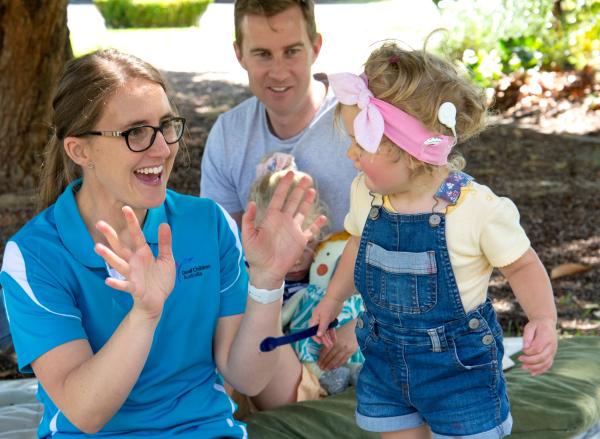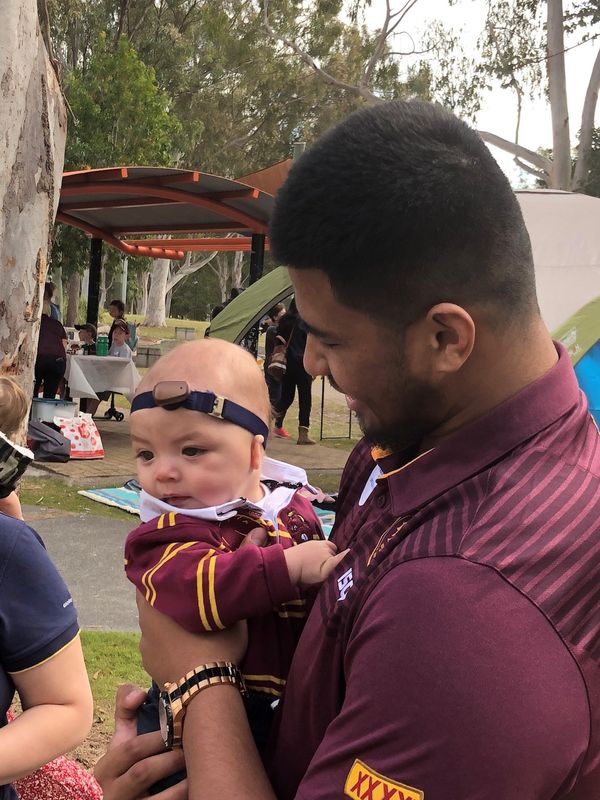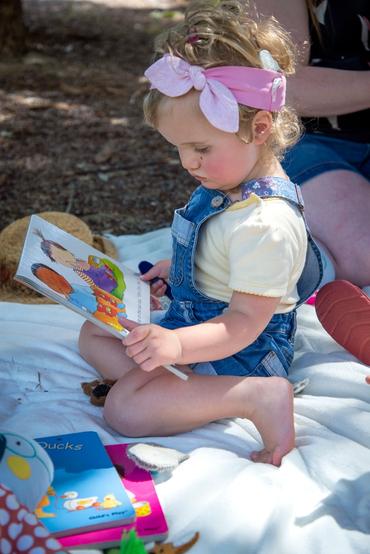Bimodal bilingual choices.
One of the earliest choices you’ll need to make is how you’ll communicate with your child. Finding a form of communication everyone in your family can understand is very important. Your choice should reflect what’s best for your child and family.

What does bimodal bilingual mean ?
This is when a sign language is used in conjunction with an oral language.
“Every child needs effective communication skills to be able to establish relationships with others, understand their world, and express their needs, ideas and feelings.”
There are three main communication options:
1. Auditory-oral approaches
Auditory-oral approaches aim to support children who are deaf or hard of hearing to develop skills that allow them to communicate with hearing people. They focus on using any hearing your child has, assisted by hearing aids, FM systems and/or cochlear implants, and sometimes lip reading. These approaches do not use sign language or finger spelling to aid understanding of speech.
If you choose this approach, you’ll need to ensure your child is making the best use of their assistive listening devices and practice every day. Your speech pathologist or teacher of the deaf will support you with this.
2. Sign bilingualism
Sign bilingualism aims to allow your child to communicate in a way that doesn't rely on hearing. Sign language - Auslan - will be their first language. Your child then learns your family’s spoken language as a second language, either through speech, writing or a sign-supported system.
Auslan is a complete language, with a unique vocabulary and its own structure and grammar. Learning Auslan will enable your child to communicate with people in the Deaf community.
If you choose this approach, you will need to become fluent in Auslan to allow your child to develop it as their first language. This means any family members not already fluent in Auslan will need education and training.
3. Total communication
Total communication aims to allow easy communication between your child and their family, friends and others they have contact with. It uses a combination of methods to foster effective communication in whatever way works best.
These methods might include lip reading, speech, gestures, body language, Signed English, finger spelling, and devices such as cochlear implants, hearing aids, and FM systems.
If you choose this approach, at least one family member (and preferably all) will need to learn the sign system you choose. You’ll need to consistently sign while speaking to your child, and be committed to improving your own sign language skills as your child’s skills grow. You’ll also need to encourage your child to use their hearing aids, cochlear implants and/or FM system consistently.
“It’s important to be able to weigh up your options, based on reliable information, before making a decision.”
What questions should I ask?

Every child needs effective communication skills to be able to establish relationships with others, understand their world, and express their needs, ideas and feelings. It’s important your choice allows your child to do this. Here are some questions to consider when thinking through your communication options:
- What are our options?
- What are the potential benefits and risks of each option?
- Would this communication approach allow my child to express their feelings and concerns, develop relationships and have control in their environment?
- Would this communication approach allow all our family to communicate with our child?
- Would this approach allow my child to communicate with the wider community?
- If your child has additional needs, will this approach be accessible for them?
- How long do I have to make this decision?
- Do I have enough good quality, unbiased information to make a decision?
Remember, learning to communicate with spoken language is hard work for children who are deaf or hard of hearing, even with modern technology. It takes years and isn’t always successful. The most important thing is that your child can communicate.
Many families decide to teach their child to speak and sign. The health professionals supporting your child and family can help with this.
How can I make an informed choice?
“You are the expert when it comes to your child.”
It’s important to be able to weigh up your options, based on reliable information, before making a decision. Potential sources of information include health professionals, service providers, other parents, brochures and other written materials, and websites and other online resources. We have added some helpful links below.
Aim to find information from legitimate, research-backed sources that aren’t trying to push a specific approach. When talking to other families, their lived experience can be invaluable, but their opinions may be flavoured by their personal knowledge and experiences. Even health professionals, who are up to date with the latest evidence, can have personal preferences.
You are the expert when it comes to your child. Health professionals can provide great support for decision-making, especially when you work in partnership to find a solution that best suits your child and family.
Don't be afraid to discuss any information with them, offer your opinion, and ask questions.

What happens next?
“Regardless of the decision you make, it’s never set in stone.”
Once you’ve started using your chosen communication approach, give it a serious go. It’s important to monitor your child’s progress regularly. If the results of your first choice aren’t what you’d hoped for, you can change it.
You also need to be open to changes in circumstances. As children develop and grow, what works can change, too. For example, the communication approach that works at home may need to expand when your child starts school.
Regardless of the decision you make, it’s never set in stone. You can continue to modify your approach in line with the needs and development of your child and family.

Fast fact:
About 6,000 people are estimated to use Auslan as their first language.
“Many families decide to teach their child to speak and sign.”



